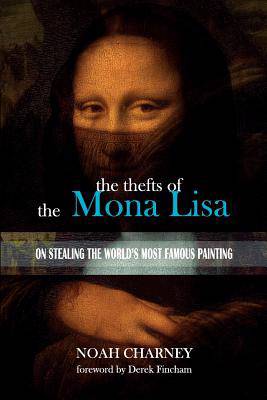
- Afhalen na 1 uur in een winkel met voorraad
- Gratis thuislevering in België vanaf € 30
- Ruim aanbod met 7 miljoen producten
- Afhalen na 1 uur in een winkel met voorraad
- Gratis thuislevering in België vanaf € 30
- Ruim aanbod met 7 miljoen producten
Zoeken
The Thefts of the Mona Lisa
On Stealing the World's Most Famous Painting
Noah Charney
Paperback | Engels
€ 40,95
+ 81 punten
Uitvoering
Omschrijving
Leonardo da Vinci's portrait, called the Mona Lisa, is without doubt the world's most famous painting. It achieved its fame not only because it is a remarkable example of Renaissance portraiture, created by an acclaimed artistic and scientific genius, but because of its criminal history. The Mona Lisa (also called La Gioconda or La Joconde) was stolen on 21 August 1911 by an Italian, Vincenzo Peruggia. Peruggia was under the mistaken impression that the Mona Lisa had been stolen from Italy during the Napoleonic era, and he wished to take back for Italy one of his country's greatest treasures. His successful theft of the painting from the Louvre, the farcical manhunt that followed, and Peruggia's subsequent trial in Florence were highly publicized, sparking the attention of the international media, and catapulting an already admired painting into stratospheric heights of fame. This book tells the art and criminal history of the Mona Lisa. This extended essay in book form, prepared to coincide with the 100th anniversary of the 1911 theft, examines the criminal biography of Leonardo's Mona Lisa, with a focus on separating fact from fiction in the story of what is not only the most famous art heist in history, but which is the single most famous theft of all time. In the process this book also tells of Leonardo's creation of the Mona Lisa, discusses why it is so famous, and investigates two other events in its history of theft and renown. First, it examines the so-called "affaire des statuettes," in which Pablo Picasso and Guillaume Apollinaire were arrested under suspicion of involvement in the theft of the Mona Lisa. Second, there has long been a question as to whether the Nazis stole the Mona Lisa during the Second World War-a question that this book seeks to resolve. This book provides a strong introduction to the Mona Lisa and the thefts surrounding it. "Noah Charney is the Sherlock Holmes of art theft. Beyond his great sleuthing prowess, he writes with the simple grace of a novelist and the erudition of a scholar. Here his subject could be no more dramatic: the impossible-but-true story of the most famous of all paintings, the Mona Lisa. It is a tale that bounces along, implicating the likes of Apollinaire, Picasso, the Nazis, and Nat King Cole. It is easy to pick up and very hard to put down." -Mark Lamster, author of Master of Shadows: the Secret Diplomatic Career of the Painter Peter Paul Rubens "Deftly written and riveting to read." -Sidney Kirkpatrick, author of Hitler's Holy Relics "Few writers have brought the issue of art theft to the fore with the fervor of Noah Charney. With The Thefts of the Mona Lisa: On Stealing the World's Most Famous Painting, Charney has created a work that is equal parts lucid art history and thrilling true crime. Both the popular myths and the hidden truths surrounding the theft and recovery of Leonardo's seminal work provide art theft investigators and museum security directors with important lessons for solving-and preventing-art crime today." -Anthony Amore, art theft and security expert and author of Stealing Rembrandts: The Untold Stories of Notorious Art Heists All profits from the sale of the print edition of this book support the charitable activities of ARCA, the Association for Research into Crimes against Art, an international non-profit research group on art crime and cultural heritage protection.
Specificaties
Betrokkenen
- Auteur(s):
- Illustrator(s):
- Uitgeverij:
Inhoud
- Aantal bladzijden:
- 162
- Taal:
- Engels
Eigenschappen
- Productcode (EAN):
- 9780615519029
- Verschijningsdatum:
- 4/08/2011
- Uitvoering:
- Paperback
- Formaat:
- Trade paperback (VS)
- Afmetingen:
- 152 mm x 229 mm
- Gewicht:
- 244 g

Alleen bij Standaard Boekhandel
+ 81 punten op je klantenkaart van Standaard Boekhandel
Beoordelingen
We publiceren alleen reviews die voldoen aan de voorwaarden voor reviews. Bekijk onze voorwaarden voor reviews.











